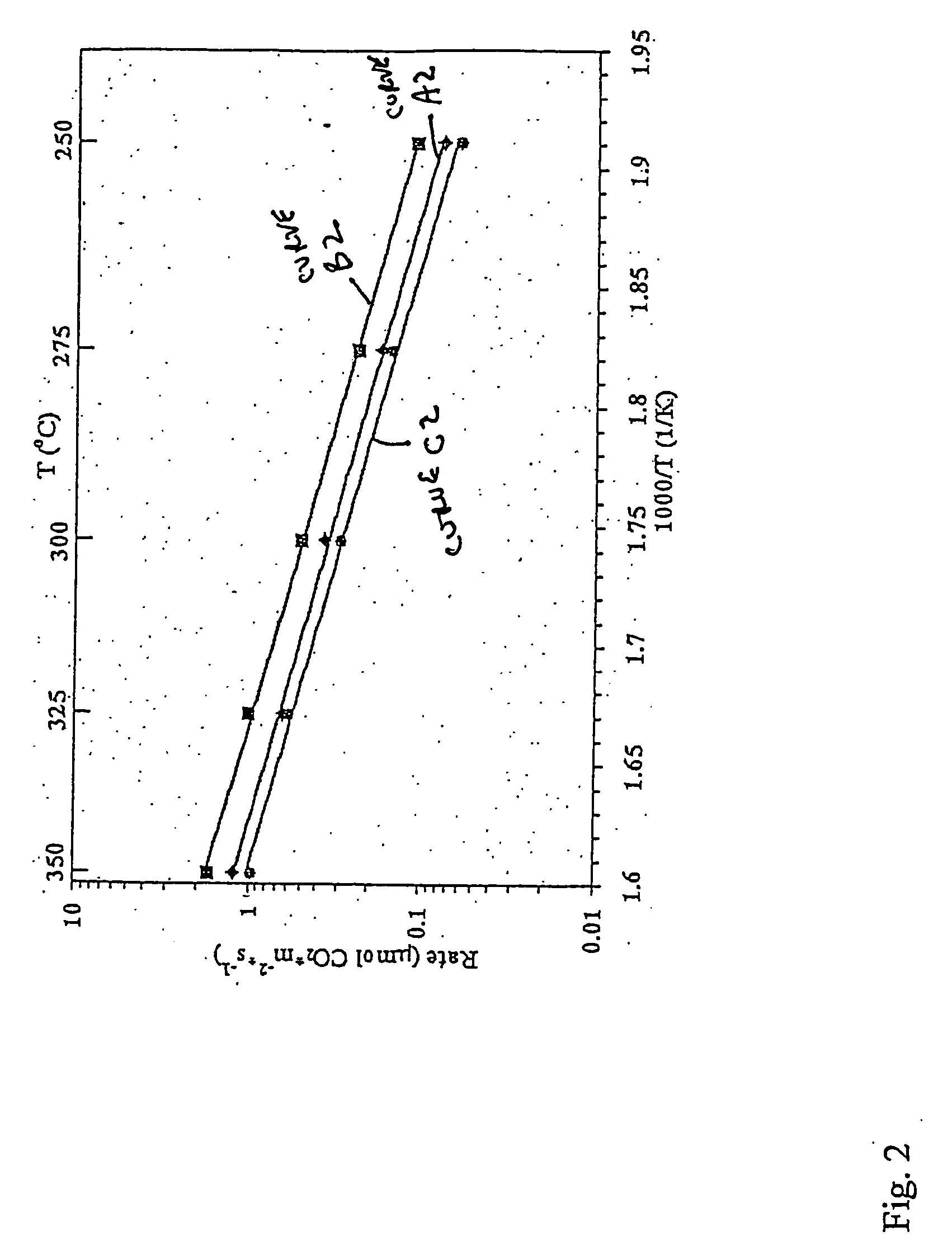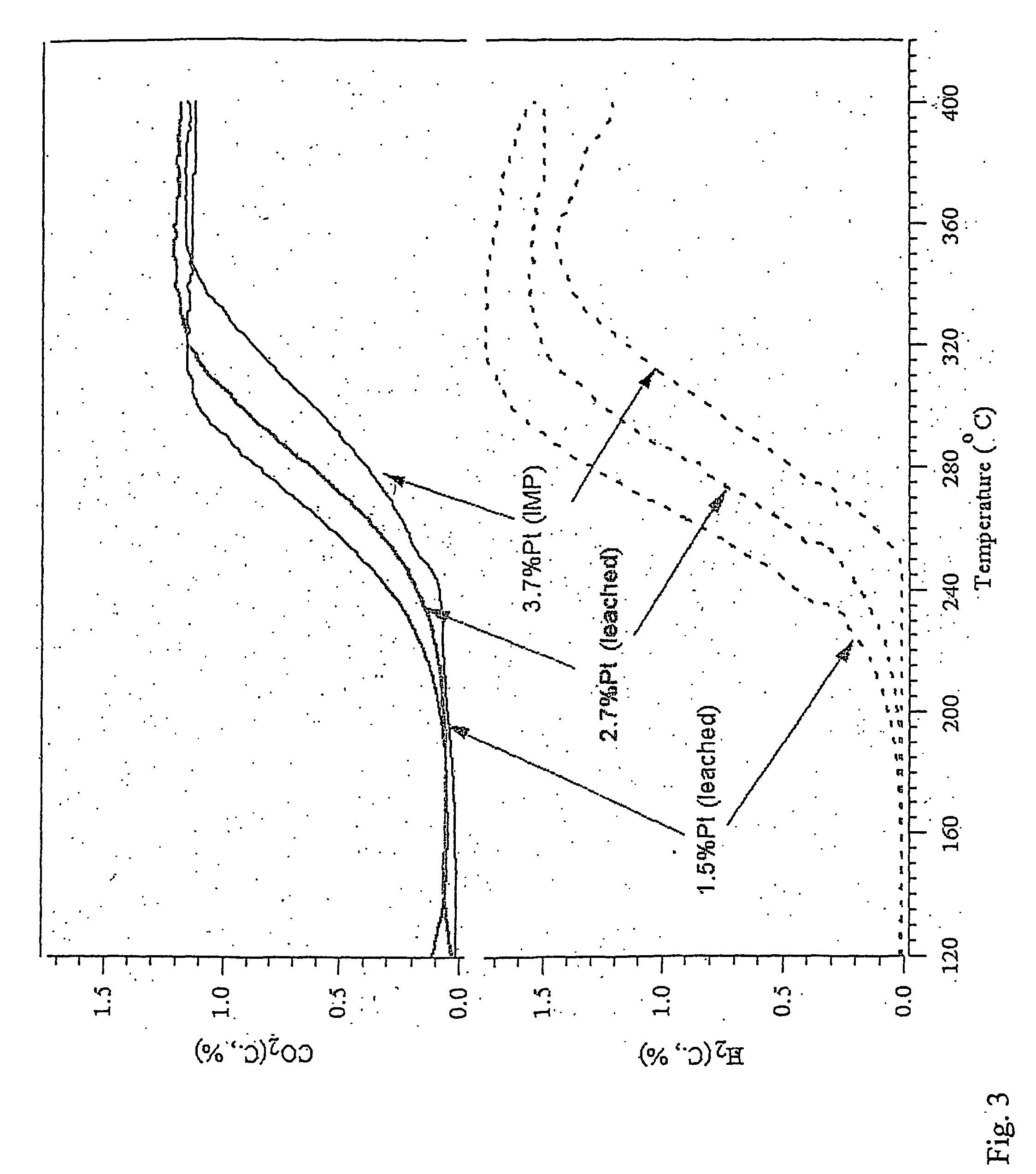Catalyst having metal in reduced quantity and reduced cluster size
a catalyst and metal technology, applied in the field of catalysts, can solve problems such as degrading the performance of fuel cells, and achieve the effect of reducing the amount of metal contained and reducing the metallic conten
- Summary
- Abstract
- Description
- Claims
- Application Information
AI Technical Summary
Benefits of technology
Problems solved by technology
Method used
Image
Examples
Embodiment Construction
[0055] In general terms, the disclosure describes catalysts having active metallic constituents deposited on metal oxide substrates, and subsequently chemically treated to remove therefrom significant amounts of the metallic constituent, including substantially all of the crystalline deposited metal. Deposited active metal remains on or in the substrate in a form or forms that are smaller in size than one nanometer. In one embodiment, the metallic constituent is a structure lacking crystallinity. It is thought that the structure lacking crystallinity contains so few atoms that a crystalline structure electronic metallic character is not observed. The catalysts have been discovered to operate with undiminished efficiency as compared to the deposited metallic constituent that includes nanocrystalline metallic particles on the same substrates. The removal of the majority of the metallic constituent, in some cases as much as 90% thereof, does not compromise the catalytic nature of the m...
PUM
| Property | Measurement | Unit |
|---|---|---|
| temperature | aaaaa | aaaaa |
| size | aaaaa | aaaaa |
| particle size | aaaaa | aaaaa |
Abstract
Description
Claims
Application Information
 Login to View More
Login to View More - R&D
- Intellectual Property
- Life Sciences
- Materials
- Tech Scout
- Unparalleled Data Quality
- Higher Quality Content
- 60% Fewer Hallucinations
Browse by: Latest US Patents, China's latest patents, Technical Efficacy Thesaurus, Application Domain, Technology Topic, Popular Technical Reports.
© 2025 PatSnap. All rights reserved.Legal|Privacy policy|Modern Slavery Act Transparency Statement|Sitemap|About US| Contact US: help@patsnap.com



